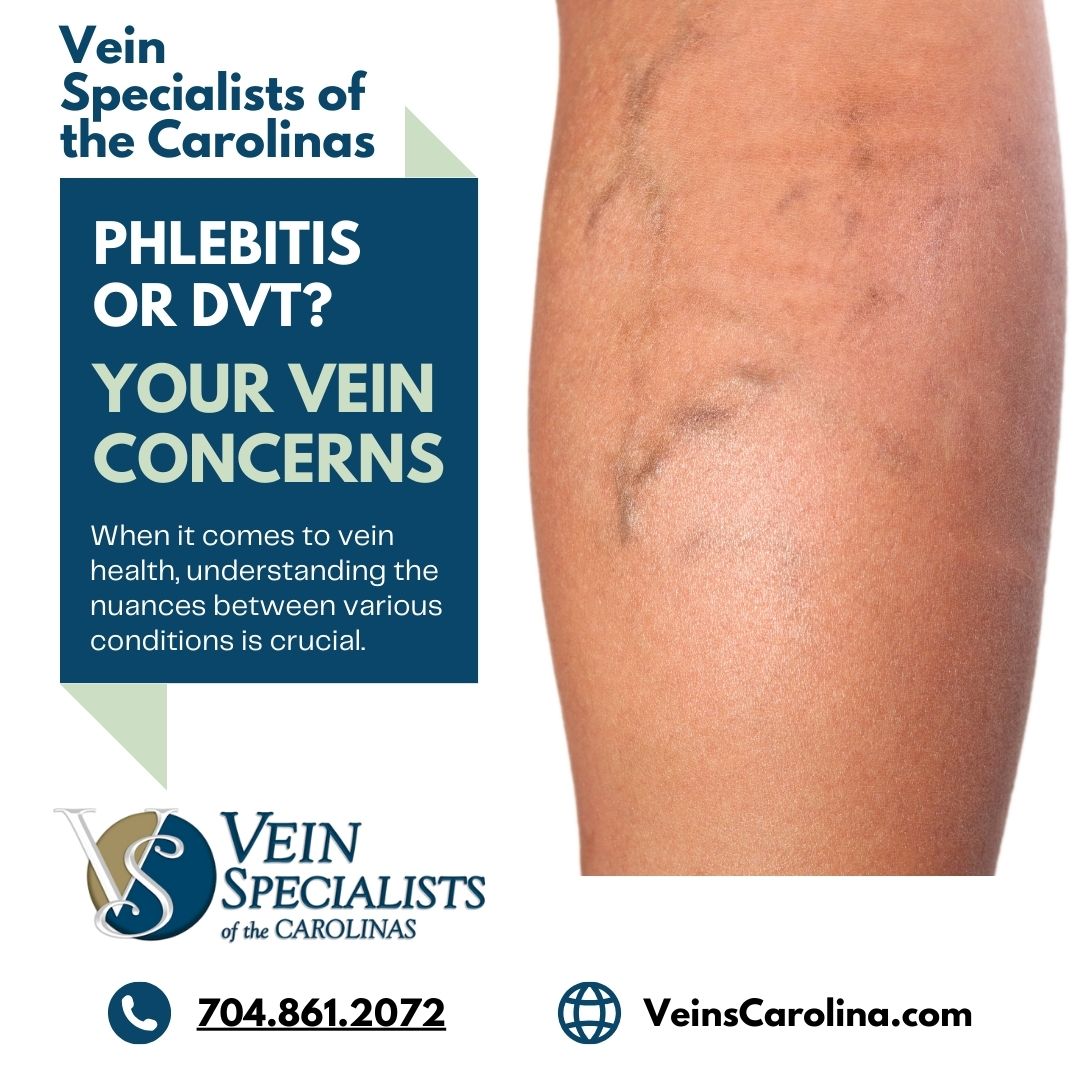When it comes to vein health, understanding the nuances between various conditions is crucial.
Two commonly confused conditions are Phlebitis and Deep Vein Thrombosis (DVT). At Vein Specialists of the Carolinas, we strive to educate our patients about these conditions to promote better awareness and proactive care.
Phlebitis: Unveiling the Superficial
Phlebitis, also known as Superficial Thrombo Phlebitis (STP) or Superficial Venous Thrombosis (SVT), involves the formation of blood clots in superficial veins or varicose veins. Unlike DVT, which affects deep veins, Phlebitis occurs closer to the surface, beneath the skin but outside the muscle layer.
Characteristics: Phlebitis typically manifests as red, painful knots under the skin. These knots may be accompanied by warmth and tenderness in the affected area. While the appearance can be alarming, Phlebitis is rarely dangerous compared to DVT.
Identification: One distinguishing feature of Phlebitis is its visibility. Since it affects superficial veins, the clots are often visible beneath the skin, presenting as red, inflamed areas. However, in some cases, varicose veins affected by Phlebitis may be deeper under the skin and not readily visible.
DVT: Delving into the Deep
On the other hand, Deep Vein Thrombosis (DVT) occurs when blood clots form in the deep veins, typically within the muscle layer. Unlike Phlebitis, which affects superficial veins, DVT poses a greater risk due to its potential to lead to serious complications like pulmonary embolism.
Characteristics: DVT may not always present visible symptoms. However, when symptoms do occur, they often include swelling, warmth, and tenderness in the affected limb. Unlike Phlebitis, DVT may not manifest as visible knots or redness on the skin.
Risk Factors: Several factors contribute to the development of DVT, including prolonged immobility, surgery, injury, pregnancy, and certain medical conditions such as cancer and clotting disorders. It’s essential to be aware of these risk factors and seek prompt medical attention if symptoms arise.
Understanding and Awareness
In summary, while both Phlebitis and DVT involve the formation of blood clots, they differ in their location within the veins and associated risks. Phlebitis affects superficial veins and typically presents as visible red, painful knots under the skin, while DVT involves deep veins and may not always present visible symptoms.
At Vein Specialists of the Carolinas, we emphasize the importance of early detection and proactive management of vein conditions. If you experience any concerning symptoms or have risk factors for vein-related problems, don’t hesitate to reach out to our experienced team for personalized care and guidance – schedule your appointment today!
“All We Do Is Veins, All Day Every Day.”
#VeinHealth #Phlebitis #DVT #VascularHealth #SuperficialThromboPhlebitis #DeepVeinThrombosis #VeinSpecialists #CarolinaHealth #Awareness #Prevention

